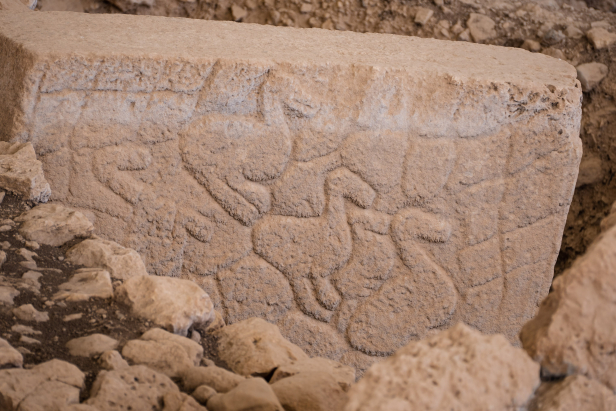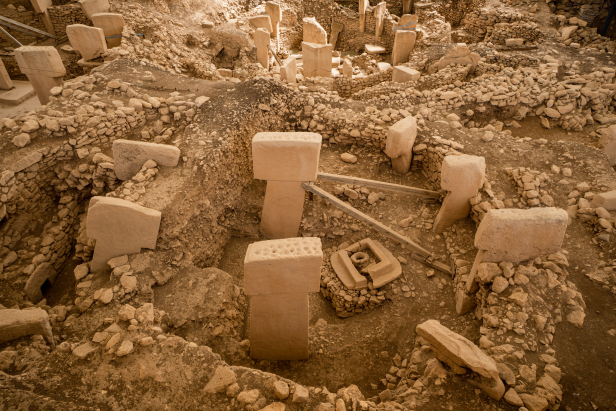Göbeklitepe Archaeological Site
Göbeklitepe
/ By Josh
Cost: 55TL
(Museum Cards Accepted)
Great for: Neolithic History, Ancient Sites, Ancient Temples, UNESCO World Heritage Site
Dated to 8,000 to 9,500 BC, the discovery of Göbeklitepe is one of the most important archaeological discoveries of the past century, challenging many of the assumptions regarding early civilization. Consisting of numerous buildings of different shapes and sizes, at its heart are a set of megalithic rings carved with reliefs of animals and humans.
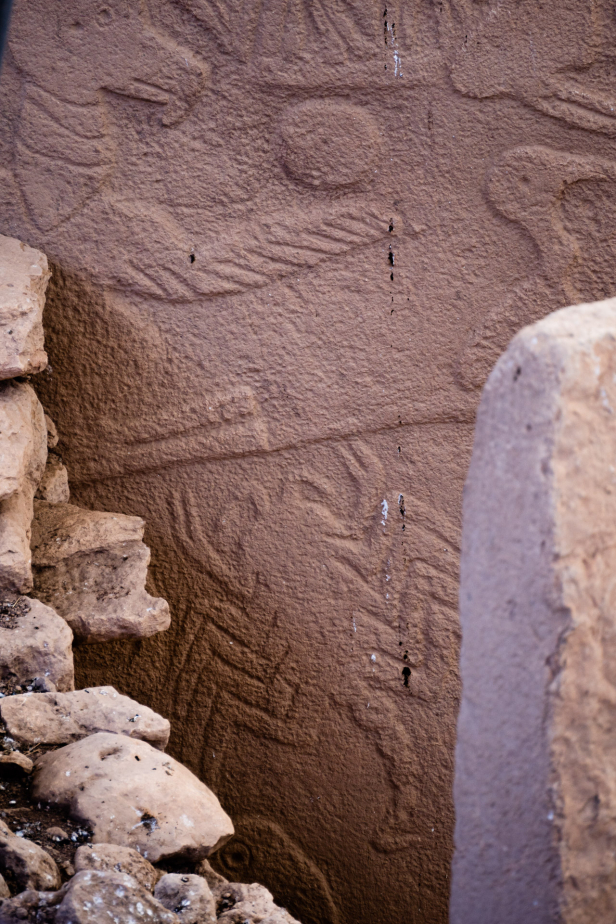
The site of Göbeklitepe is a man-made tumulus hill on the top of a broad rocky plateau in the northern reaches of Mesopotamia and the Fertile Crescent.
Subscribe to The Art of Wayfaring
The site was discovered in 1963 though excavations didn’t begin till 1995 under the direction of Klaus Schmidt. To date only 5% of the site has been excavated, though its thought that the heart of the site has been explored. So far the site is understood to consist of three layers: Layer III, where the largest ring-structures have been found, Layer II where smaller, roughly square buildings were discovered, and Layer I, consisting of a man-made mound that buried and preserved the site.
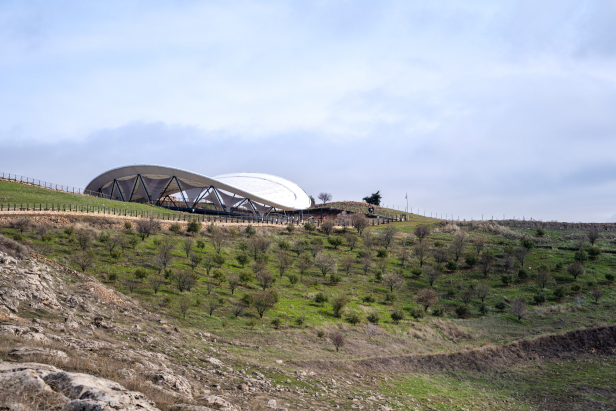
Layer III is the oldest and by far the most fascinating. The main structures in this layer are made up of large standing “T” shaped stones placed in a ring with a pair of larger “T” stones placed in the middle. Layer III of Göbeklitepe has been radio-carbon dated to 8,000-9,500 BC, making these ring structures the oldest known monumental site. The “T” stones in this layer bear depictions of scorpions, boars, large felines, vultures, and ibis in low relief. Alongside the low reliefs is one conspicuous feline, carved in high-relief, to the point of resembling a separate stature stuck to the side of one of the “T” stones.
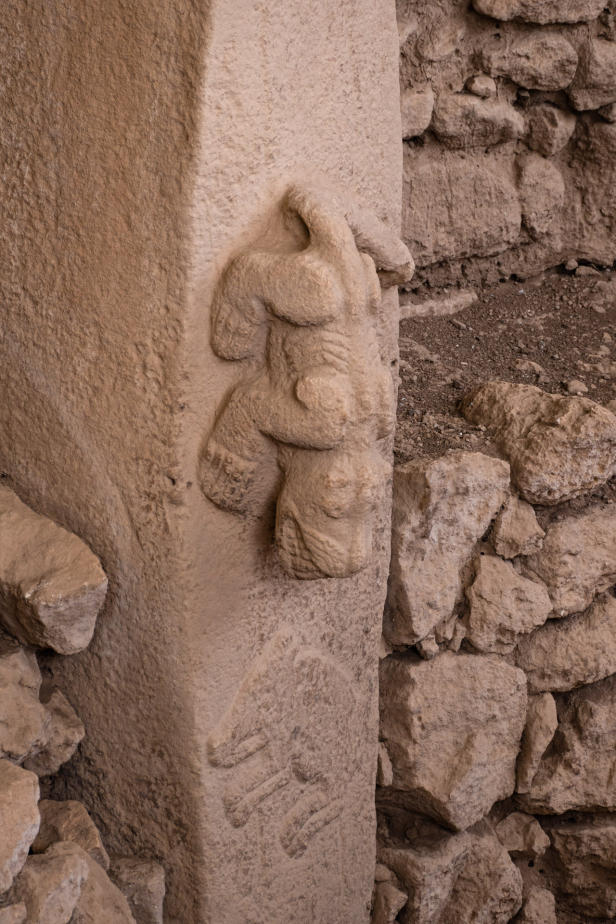

The shift to Layer II at Göbeklitepe is stark. Though some of the themes carry on the over all size is vastly diminished and in the place of round structures, the buildings are now square. Remaining however are the freestanding “T” structures in the center of the rooms.
Subscribe to The Art of Wayfaring
Layer I is the rubble used to bury the structures. While this doesn’t seem particular interesting, the fact that the site was not simply abandoned but rather buried through incredible effort raises many questions.
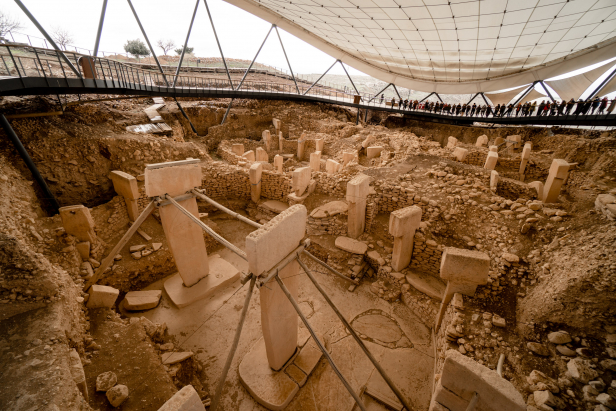
While the ancient stones themselves are fascinating, it’s really the questions they raise that makes Göbeklitepe such an important place for our understanding of human history. Göbeklitepe is dated to the prepottery Neolithic A, a period when people were thought to have been semi-nomadic and pre-agricultural. Yet the building of such a site would have required an incredible level of consistent cooperation at a time when food yields were far lower than what such a settled population would have required. It also raises questions regarding the relationship between the development of religion and civilization. Klaus Schmidt suggests that it was actually the religious impulse that led to settled civilization rather than the other way around as has been commonly suggested.
With 95% of the site yet to be excavated Göbeklitepe undoubtedly has many answers and new questions waiting to be unearthed.
How To Get There
General
Relatively close to the city of Urfa (16 kms), it’s possible to hire a taxi to bring you all the way to Göbeklitepe. You could also check with your hotel to see if they have shuttle service to this very popular site.
If you have your own car, head east out of the Urfa city center on the D400 highway (Urfa-Mardin highway). 4 kilometers out of the city turn north onto the Ulubağ Köyü road. Follow this, pass over the E90 highway, then turn left following the brown signs marked for Göbeklitepe.
For more about car rental and driving in Turkey make sure to read our full drivers guide.
Where To Stay
Göbeklitepe is only 16 kilometers north-east of the city of Urfa, making that your best option by far. In the city there are boutique hotels in the old quarter and even larger 4 star hotels near the city center that will have you close to the museums, parks, and historical sights.
Other Tips
Planning on visiting Göbeklitepe? Make sure to check out the many other amazing sights of Turkey’s South East!
Subscribe to The Art of Wayfaring
Have any tips or info to add? Spot any mistakes? We’d love to hear about it.
